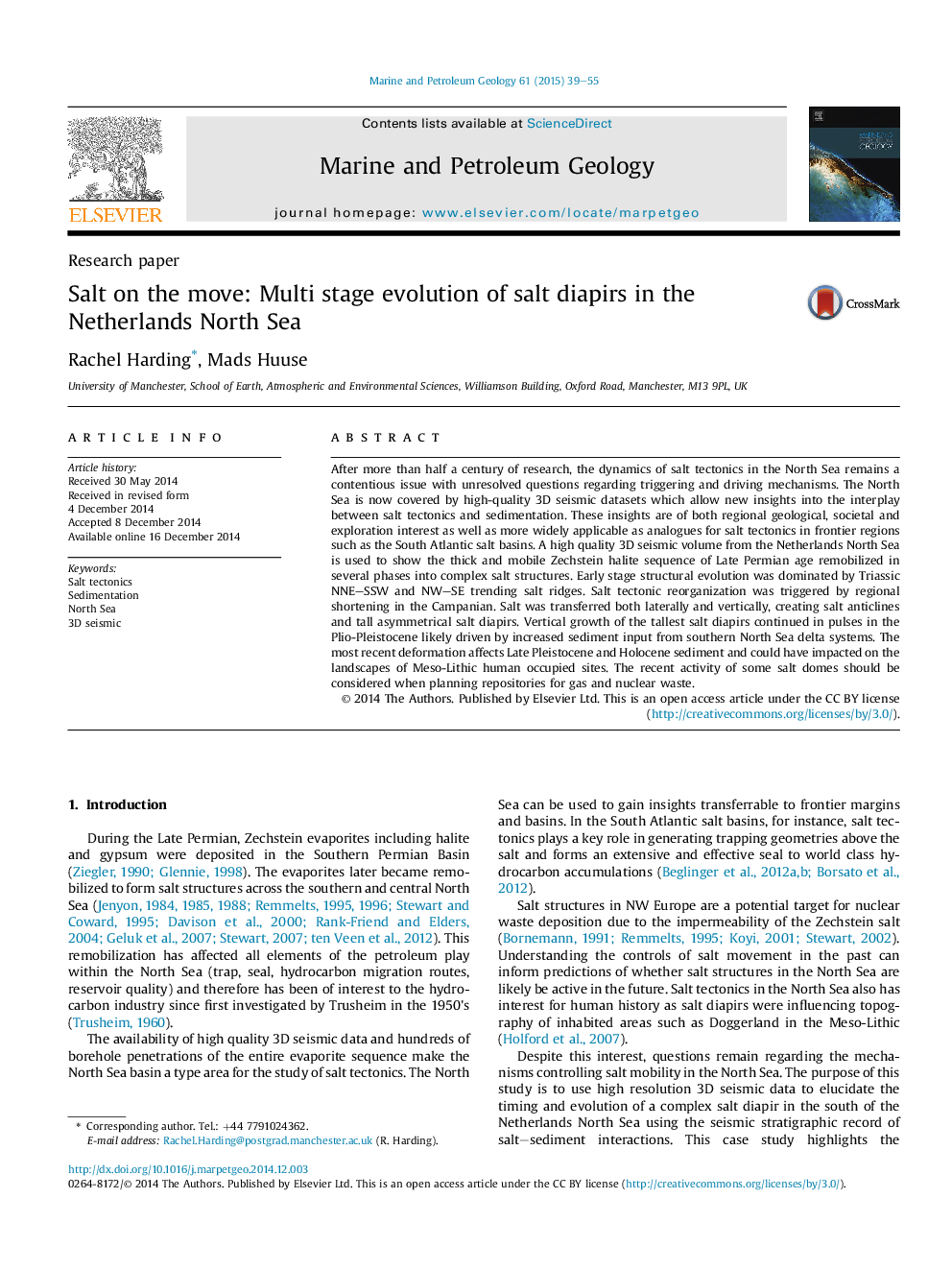| کد مقاله | کد نشریه | سال انتشار | مقاله انگلیسی | نسخه تمام متن |
|---|---|---|---|---|
| 6435185 | 1637164 | 2015 | 17 صفحه PDF | دانلود رایگان |
- Orientation of salt structures has a complex relationship to sub salt faulting.
- Time thickness maps enable visualisation of salt remobilising in the Late Cretaceous.
- Salt flows out of Triassic-Early Cretaceous salt walls into isolated vertical diapirs.
- Realigned polygonal faults used to indicate salt diapir at or near the sediment surface.
- Salt diapirs still show activity in the Late Quaternary.
After more than half a century of research, the dynamics of salt tectonics in the North Sea remains a contentious issue with unresolved questions regarding triggering and driving mechanisms. The North Sea is now covered by high-quality 3D seismic datasets which allow new insights into the interplay between salt tectonics and sedimentation. These insights are of both regional geological, societal and exploration interest as well as more widely applicable as analogues for salt tectonics in frontier regions such as the South Atlantic salt basins. A high quality 3D seismic volume from the Netherlands North Sea is used to show the thick and mobile Zechstein halite sequence of Late Permian age remobilized in several phases into complex salt structures. Early stage structural evolution was dominated by Triassic NNE-SSW and NW-SE trending salt ridges. Salt tectonic reorganization was triggered by regional shortening in the Campanian. Salt was transferred both laterally and vertically, creating salt anticlines and tall asymmetrical salt diapirs. Vertical growth of the tallest salt diapirs continued in pulses in the Plio-Pleistocene likely driven by increased sediment input from southern North Sea delta systems. The most recent deformation affects Late Pleistocene and Holocene sediment and could have impacted on the landscapes of Meso-Lithic human occupied sites. The recent activity of some salt domes should be considered when planning repositories for gas and nuclear waste.
Journal: Marine and Petroleum Geology - Volume 61, March 2015, Pages 39-55
